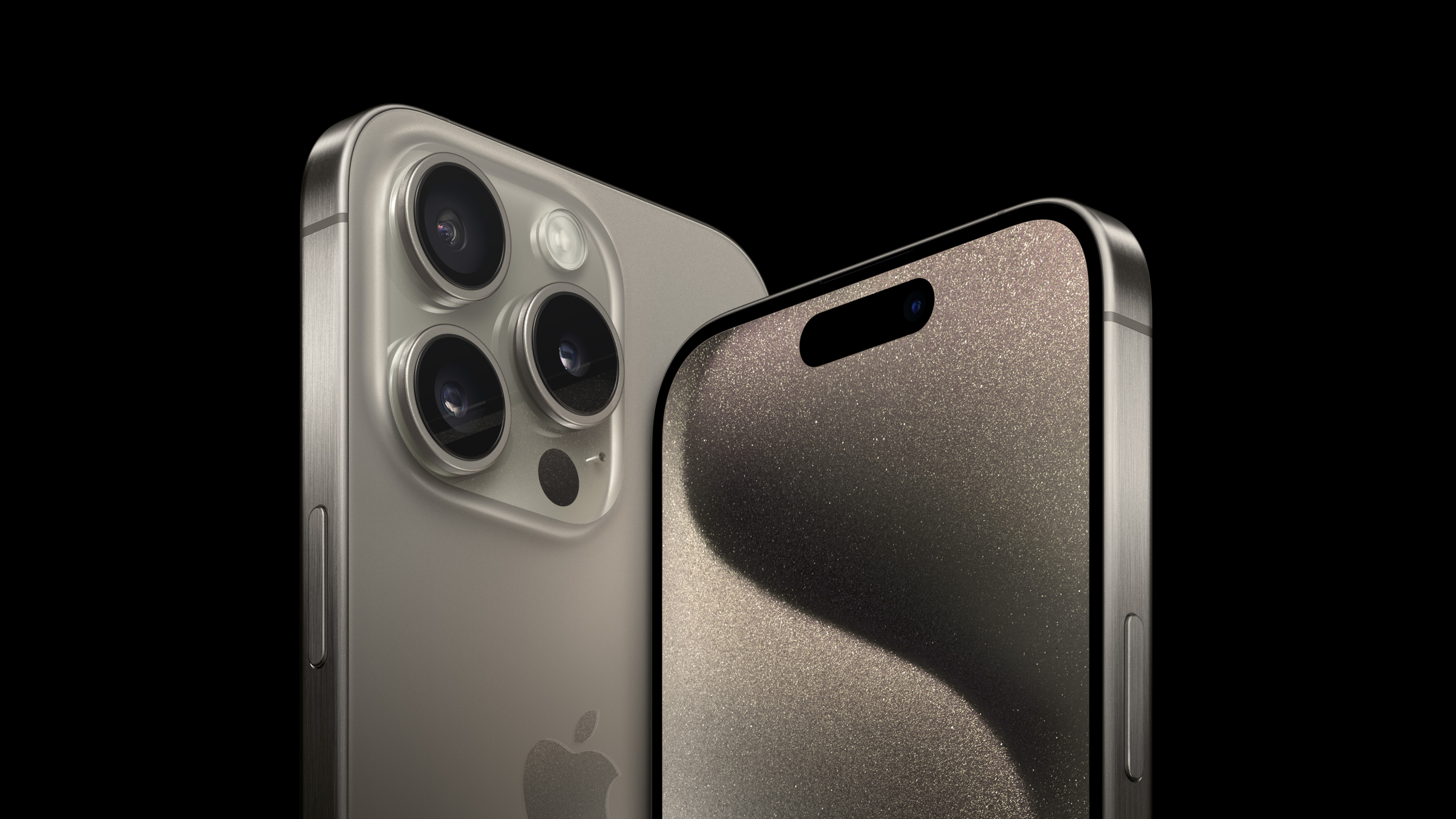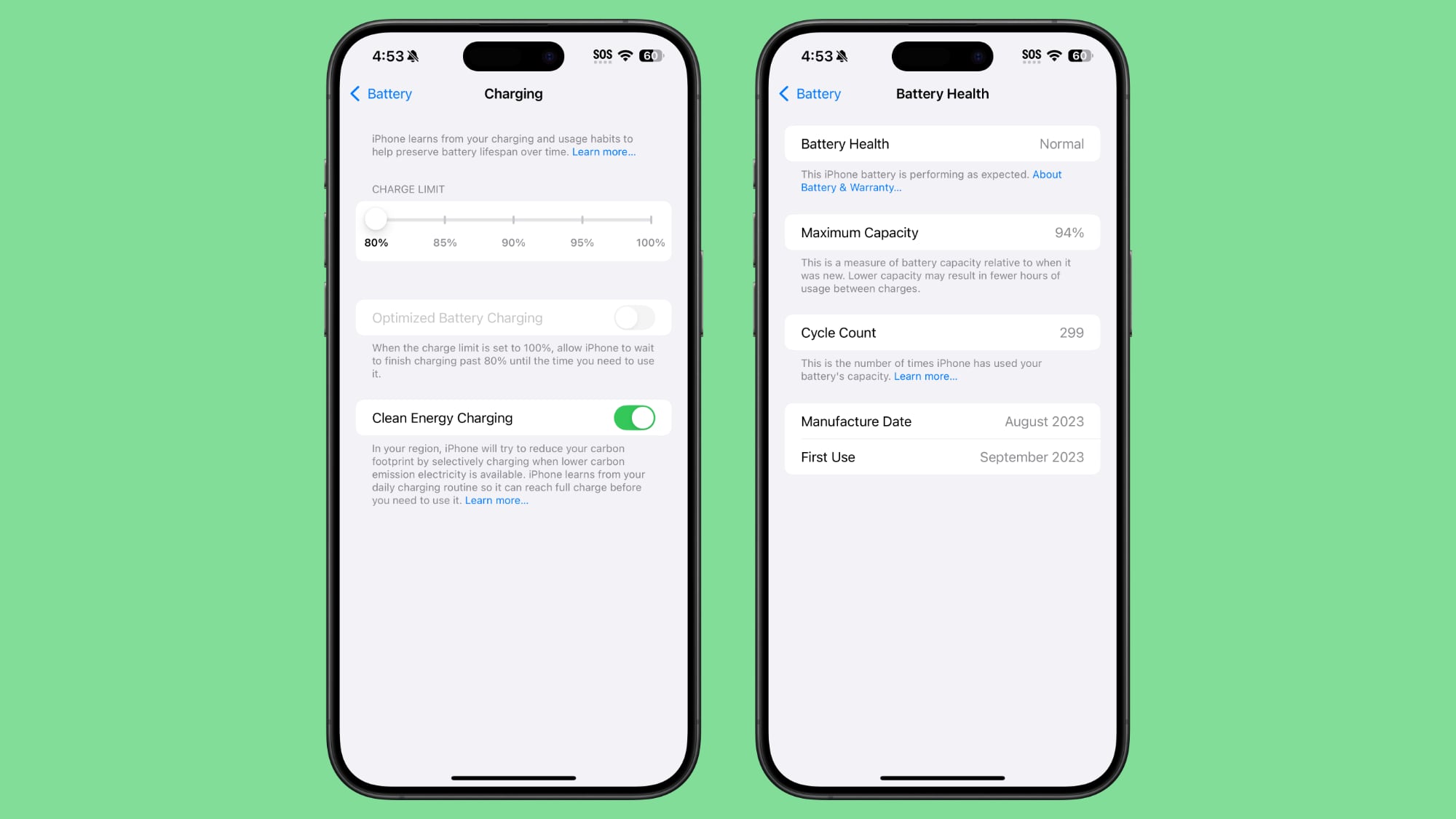![]()
With the iPhone 15 models that came out last year, Apple added an opt-in battery setting that limits maximum charge to 80 percent. The idea is that never charging the iPhone above 80 percent will increase battery longevity, so I kept my iPhone at that 80 percent limit from September 2023 to now, with no cheating.
My iPhone 15 Pro Max battery level is currently at 94 percent with 299 cycles. For a lot of 2024, my battery level stayed above 97 percent, but it started dropping more rapidly over the last couple of months.
I left my iPhone at that 80 percent limit and at no point turned the setting off or tweaked it. There were some days when I ran out of battery because I was without a charger for most of the day, and there were other times that I had to bring a battery along to make sure I didn't run out of power. It wasn't always convenient to keep it at 80 percent, but there were days when it didn't have too much of an impact.
It was always a treat when the iPhone randomly decided to charge to 100 percent, which is something Apple has baked in to the 80 percent limit to ensure the battery level stays calibrated.
For the most part, I charged using USB-C rather than MagSafe, but there was some MagSafe charging mixed in. There was probably a 70/30 split between wired charging and MagSafe charging. I did often let my battery get quite low before charging, and it didn't sit on the charger for long periods of time too often. Most charging was done in a room at 72 degrees. I'm adding this context because temperature is a factor that can affect battery longevity, and wireless charging is warmer than wired charging.
You can compare your level battery to mine, but here are a couple other metrics from MacRumors staff that also have an iPhone 15 Pro Max and did not have the battery level limited.
- Current capacity: 87%. Cycles: 329
- Current capacity: 90%. Cycles: 271
I don't have a lot of data points for comparison, but it does seem that limiting the charge to 80 percent kept my maximum battery capacity higher than what my co-workers are seeing, but there isn't a major difference. I have four percent more battery at 28 more cycles, and I'm not sure suffering through an 80 percent battery limit for 12 months was ultimately worth it.
It's possible that the real gains from an 80 percent limit will come in two or three years rather than a single year, and I'll keep it limited to 80 percent to see the longer term impact.
I did set my iPhone 16 Pro Max to an 80 percent limit, but I don't know if I want to continue the test given the lackluster results I had from 2023 to 2024. Will the thermal changes in the iPhone 16 models make any difference? Maybe, maybe not. There's a 90 percent charge limit option too, and that might be more feasible than 80 percent for most people, especially those that have phones with smaller batteries.
Let me know your current battery capacity and cycle count in the comments below, and weigh in on whether you think Apple's limits are worthwhile.
Article Link:
Apple's 80% Charging Limit for iPhone: How Much Did It Help After a Year?








